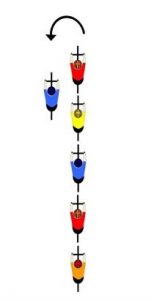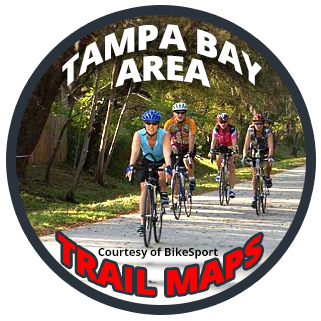Cycling Paceline Etiquette
Pacelines are a great way to ride efficiently within a group of cyclists.
Unfortunately, many cyclists do not know or understand the [unwritten] rules of riding in a paceline – speed, where to ride, signaling and distance to name a few. For most cyclists, a group ride is a fairly informal event – show up to a shop ride on Saturday/Sunday, gear up and go.
Understanding the purpose of the paceline is as important as understanding the rules of a paceline. Efficiency is the primary purpose of a paceline. Here are some guidelines to making a paceline successful:
Speed — Maintain the “pack” speed when moving to the front! Many will try to man-up or show-off by accelerating when he/she moves to the front. The lead rider should pull off to the side and smoothly decrease speed. The second rider should maintain the speed of the group. If the speed is to be increased, do so slowly and smoothly. Allow the rider to regroup at the back and benefit from the draft. It’s important to remember, the cyclist coming off the lead, just did a pull and is probably a little tired. If you surge, the rider pulling off or even the group may be gapped or even dropped!
Communicate — Always communicate effectively throughout the paceline. Identifying debris in the road or oncoming cars is critical to a successful paceline.
- Use hand signals to indicate turns (left and right), stopping and slowing.
- Use verbal warnings. This includes warnings for turns, stopping and slowing. “Car Up” – to warn of approaching vehicles. “Car Back” or “Coming Around” – to warn of passing vehicles. “On your left” – when overtaking an unsuspecting cyclists.
- Point out and announce hazards in the road. This includes holes, bumps, road kill, gravel, sand, pedestrians, cars, etc. Anything disruptive to a cyclist.
No sudden movements — riders need to ride straight, steadily, and smoothly. Your riding affects all other riders in the group, so be consistent, safe and predictable. Always be aware of what is happening around you.
- Do not overlap wheels with the rider in front of you!
- Do not coast in the pace line. If you need to slow a little soft pedal and feather the front brake. Coasting breaks your rhythm, disrupts the line and causes the accordion effect at the back.
Limitations — know your physical limitations. Do not over exert yourself at the front. Stronger riders should pull longer, weaker riders should pull shorter. Do not be embarrassed to simply pull through immediately.
- Do not ride to the front of the paceline and pull out in 2nd or 3rd position from the front opening gaps for the riders behind you. If you find yourself at the front, pull through and over once the front wheel of the rider who pulled off in front of you is past your rear wheel. This will not take any more energy and prevents opening gaps for the riders behind you.
Paceline – which one?

SINGLE PACELINE
There are a few different types of pacelines you might encounter on a group ride, let’s talk about the common three:
Single Paceline
Just as it sounds; the group forms a single line of cyclists. Typically, the rotation is into the direction of the pressing wind; if the wind is pushing from the East, the lead rider will pull off to the left side. However, please use discretion as to the rotation direction; be aware of traffic and the space around the paceline.
A single file line is formed when conditions don’t allow double pace line riding such as:
- Traffic is heavy and poses danger.
- Road quality is bad and creates a hazard to the riders.
- Speed is increasing to a level that compromises safety for the riders.
Double Paceline

DOUBLE PACEL.INE
When there is enough riding room and the group is large, a double paceline can be used where there are two rows of riders side-by-side.
Key Characteristics of this formation is that riders line up in pairs.
- It’s important to always maintain position next to each other at shoulder level.
- Rotate by forming a ‘butterfly’. Left rider turns off left, right rider turns off right and both join again together at the end of the group.
- In case of an odd number of riders in the group the rider on the ‘shorter’ line will close up and form a new pair with the rider on the’longer’ line.
Rotating Paceline

ROTATING PACELINE
The circular pace line or ‘rotating pace line’ requires advanced skills and perfect team harmony.
- When traffic conditions allow, the Ride Leader calls Rotate and nominates slow and pace line speeds. The pace line speed is usually 2 km/h faster, and the group will circulate counter-clockwise.
- Once the lead rider of the pace line has drawn clear in front of the lead rider of the slow line, the latter says Clear, to indicate it is safe to move over to the slow line.
- The leading rider of the pace line moves over to the front of the slow line and slows down smoothly to the nominated slow line speed.
- At the rear of the group, the last rider in the slow line will follow the previous rider over to the pace line, ensuring there is no gap, and advise the next rider that they are now Last.
ALWAYS be considerate to other cyclists and motorists! Your actions reflect the club, your sponsors and the cycling community as a whole!
BikeSport thanks the Suncoast Cycling Club for sharing this document with us.





